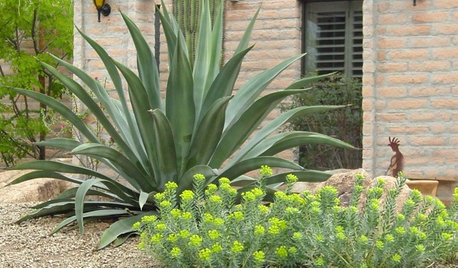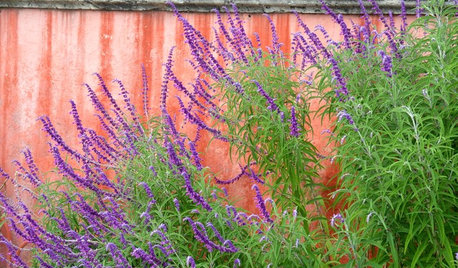Not Watering During Drought (?)
reball517
13 years ago
Related Stories

GARDENING GUIDESHow to Spot a Drought-Tolerant Plant
Label? Who needs a label? Learn the characteristics of plants that can thrive in hot, dry conditions to help you pick the right ones
Full Story
GARDENING GUIDES10 Plants for Colorful Fall Blooms in the Drought-Tolerant Garden
Want fall color but not a big water bill? Consider these not-too-thirsty fall bloomers
Full Story
SAVING WATER11 Ways to Save Water at Home
Whether you live in a drought-stricken area or just want to help preserve a precious resource, here are things you can do to use less water
Full Story
GARDENING GUIDES10 Drought-Tolerant Shrubs That Thrive in Full Sun and Reflected Heat
Got a hot spot in your garden where plants often die? Try these tough shrubs that add beauty while shrugging off the heat
Full Story
HOUSEKEEPING10 Chores You Can Whip Through During Commercials
Use ad time for getting tasks done, and it’s like fast-forwarding your house into cleanliness
Full Story
HEALTHY HOMEWhat to Know About Controlling Dust During Remodeling
You can't eliminate dust during construction, but there are ways to contain and remove as much of it as possible
Full Story
LIFE10 Ways to Work Through Grief Triggers During the Holidays
A year after losing her sister, she was facing another holiday. Here’s how one woman learned to find joy again
Full Story
LIFE10 Ways to Cope With Grief During the Holidays
If you are experiencing loss, take it from an experienced griever — life has changed forever, but it does get better
Full Story
LIFEHow to Keep Your Pets Safe During the Holidays
To avoid an unwanted trip to the vet, be aware of these holiday-related hazards for dogs and cats
Full Story
SHOP HOUZZShop Houzz: Explore Decor With Bite During Shark Week
Sink your teeth into edgy ocean-themed decor
Full StoryMore Discussions







mad_gallica (z5 Eastern NY)
sue36
Related Professionals
Carson Landscape Architects & Landscape Designers · Fort Wayne Landscape Contractors · Franklin Landscape Contractors · Huntington Landscape Contractors · Lebanon Landscape Contractors · Long Branch Landscape Contractors · Mason Landscape Contractors · Mount Sinai Landscape Contractors · Old Saybrook Landscape Contractors · Yuba City Landscape Contractors · Shenandoah Landscape Contractors · Fairfax Decks, Patios & Outdoor Enclosures · Fredericksburg Decks, Patios & Outdoor Enclosures · Lake Morton-Berrydale Decks, Patios & Outdoor Enclosures · South Houston Decks, Patios & Outdoor Enclosuresspedigrees z4VT
terrene
diggingthedirt
reball517Original Author
pixie_lou
carol6ma_7ari
WendyB 5A/MA
kathyannd
jannie
spedigrees z4VT
claireplymouth z6b coastal MA